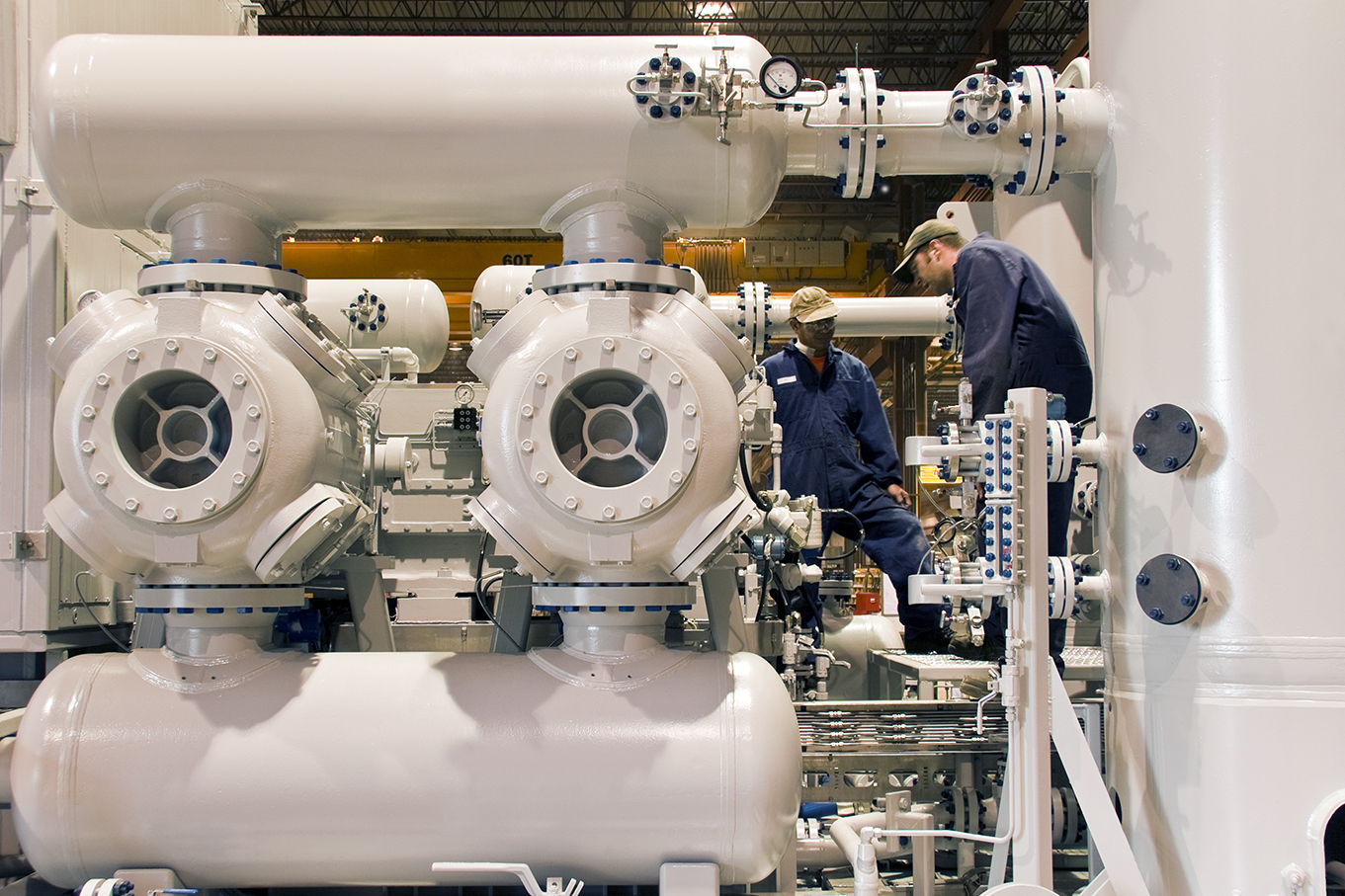Multi-stage compressors are essential devices employed to increase the pressure of technical gases such as air, hydrogen and other industrial gases. The compression is divided into several stages to optimize the process, improve efficiency and manage the different temperatures generated during compression.
What are multi-stage compressors used for? These compressors are used in a wide variety of industrial sectors, such as:
• Power generation: for hydrogen and gas turbine applications.
• Chemical industry: for the transport and processing of technical gases.
• Automotive: in hydrogen refueling stations for fuel-cell vehicles.
• Oil & Gas: for the compression of natural or process gases.

Why is inter-stage cooling necessary?
During each compression stage, the gas heats up significantly. An inter-stage cooling system is therefore essential to:
• Reduce the work-duty required in the next stage.
• Protect components from high temperature.
• Maintain operational safety and efficiency.
Closely linked to multi-stage compressors is therefore the fundamental role of inter-stage cooling of the treated technical gases, which is achieved thanks to the use of multi-stream solutions, an ideal application for PCHE exchangers. Topics that we might discuss more in detail in a series of upcoming articles.
